Discussion
N7GTX said:
RR coil pack behind the plenum makes a nice neat set up. If you're skinny like Classic Chim you can replace the leads without removing the plenum. And being a genuine part the coil mounting points fit exactly without any modifications. Nicely hidden from view in this pic.
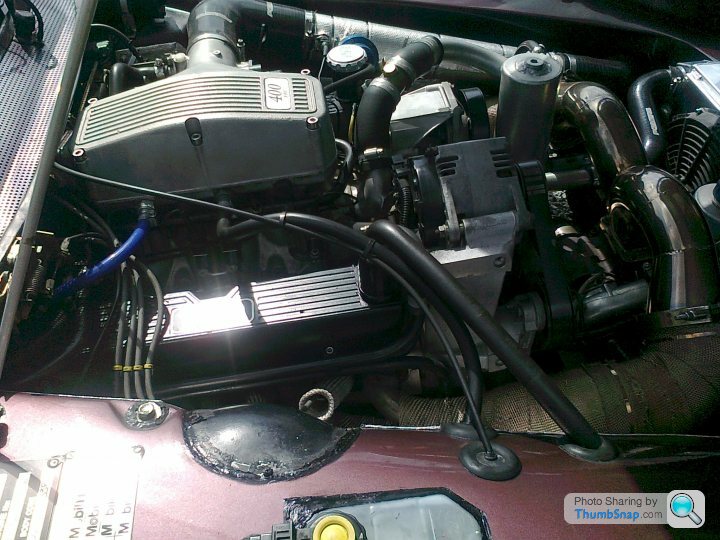

 I think you meant lean,,, as in lean and mean. I have big hands though
I think you meant lean,,, as in lean and mean. I have big hands though 
Some cracking set ups on here, it’s about time we saw some more Pics

Sos wrong one

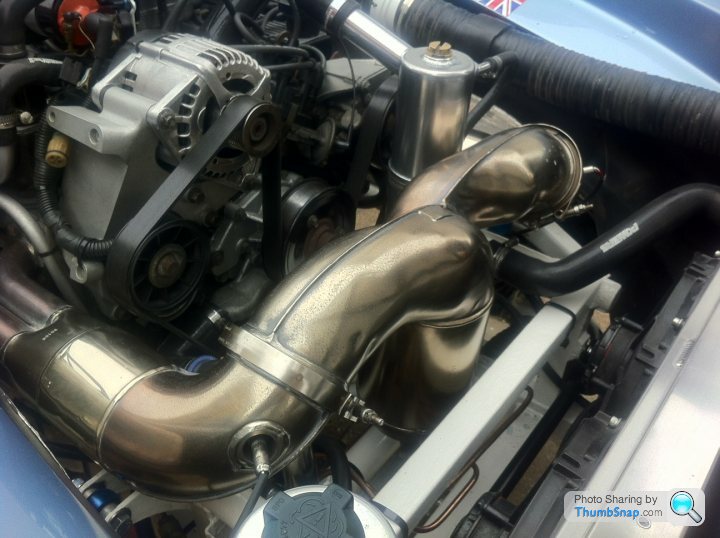
That’s better

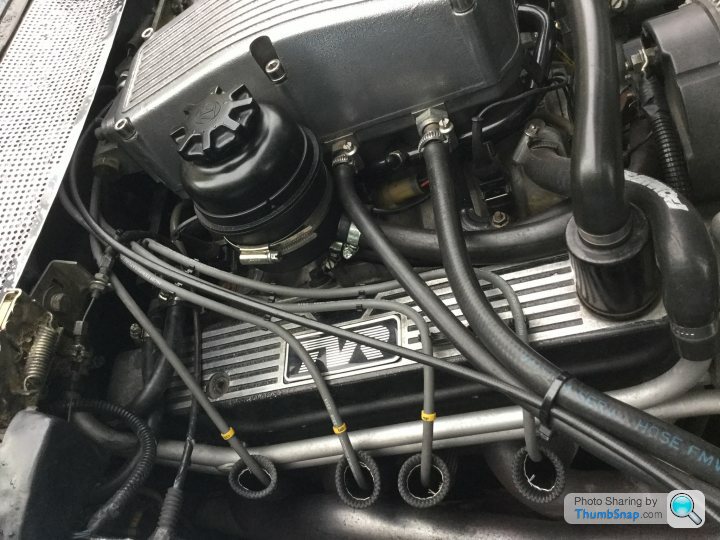
spitfire4v8 said:
I also do installs with no stepper if the customer so wishes, but I consider there are very good reasons for running with one (in fact every major manufacturer uses some way to increase airflow on cold starts too, I don't suppose they're all wrong.
No way are they all wrong, obviously idle valves have their place or as you quite rightly say they simply wouldn't be fitted to nearly every car made today, and of course before electric idle air control valves there were idle cams on the carb's choke lever or even hand throttles if we go back even further to the days of vintage cars, all of which are forms of an extra air device in one way or another. The issues with modern idle valves are not the valves themselves but come when they're not controlled especially well, when a poorly made non original idle valve has been used, when there are EMI shielding issues with the ECU, and finally (in my opinion) when the idle valve does not default to the fully closed position at the point no extra air is required. And lets not forget the Lucas 14CUX system that controls a stepper motor is itself far from immune from idle air control valve issues and the idle/drivability issues that inevitably come with poor idle valve management, I'm no electronics expert or engine management engineer but it seems quite obvious to me the absolute perfect management any form of idle valve is quite a challenging thing to pull off.
These are just my opinions of course but they are based on personal experience and testing, my own tests in particular prove without any argument that my engine, which I can't imagine is any different form any other Rv8 engine, only really requires extra air when true coolant temp is in the range from it's lowest point on the very coldest day (say 5 degrees) to 45 degrees. From 45 degrees true coolant temperature and above my engine at least has conclusively and consistently proved to me it requires no extra air whatsoever, indeed when 45 degrees true coolant temperature is reached the engine has also shown me it's actually advantageous (for a number of reasons) to run a 'No Extra Air' strategy from 45/50c up.
Saying that if I could run a reliable and safe extra air strategy during the warmup phase between 5-45c on a taper that ends around 50c and also ends its involvement in a default closed (no air) idle valve position... I definitely would! On my car from the early autumn months where ambient morning temperatures may be 12 degrees or lower and coolant temps may be 15 degrees or lower there is most definitely a requirement for some 'Extra Air' to maintain idle during warm up, a requirement that goes way beyond what ignition timing alone can provide.
How you introduce this extra air is a choice that could be as simple as the driver opening the throttle a little with his foot on the accelerator pedal, via some form of idle air control valve be it a stepper motor or the more modern PWM controlled rotary type valves we see from the likes of Bosch, or even the coolant connected wax type extra air valves we've seen used to great effect on many Japanese cars in the past.
It's my understanding the MBE system from Powers Performance does not use an idle air control valve, this quite clearly would have been a conscious choice made by the person who designed the system, and I'm sure there was a very good reason for that choice because lets face it the MBE ECU is more than capable of controlling an idle air control valve and the ability for the team calibrating the MBE system to create an effective extra air strategy is also not in question either.
So why do the MBE/Powers team choose to rely solely on ignition timing to manage idle speed..

This question is even more intriguing to those of us brought up and trained on distributor ignition systems who will all know there's only so much engine speed you can add and subtract by advancing/retarding ignition timing, scatter spark is a very useful strategy but no one can deny it has it's limitations within a fairly narrow window of chosen idle speeds. All the OEMs know this which is why they all use idle air control valves, but only as a package of idle management strategies ie in support of dynamic ignition timing based idle control. Your typical OEM ECU is of course way superior and infinitely more sophisticated than your average aftermarket ECU, especially the ECU's used on our cars which in the world engine management can only be described as.. very basic mid 90's technology.
I suspect the guy who put the MBE system together for Powers Performance omitted an idle air control valve because he knew the benefits of doing so outweighed the advantages of using one. Understanding he could effectively manage idle in 98% of all circumstances without an IACV by just using ignition timing he was firstly able to save the cost of the valve itself, secondly he could make the mapping process simpler and faster to deliver consistent results (especially AFRs) which has been my experience too.
Pulse width modulation is a clever thing for sure, it does of course rely on a quality controller to make it work properly and because the strategy pulse switches the low current PWM device to earth the quality of the earthing becomes very important indeed, susceptibility to the effects of earth loops and the EMI issues that inevitably follows is also high. As we all know earthing of a vehicle with a fiberglass body adds an additional challenge so understanding this perhaps the MBE/Powers team chose to shy away from adding anything PWM, which other than sophisticated cooling fan control really means the use of an idle air control valve?
One of the reasons i fit an iacv is that even at my 1895 pound entry level ecu i wouldnt expect my customers to have to tickle the throttle on cold starts. If i was expecting them to do that on a 3k system id be deeply embarassed.
And thats before you even consider the extra base airflow and retarded hot idle timing a non iacv system might run to try and claw some kind of cold idle speed back.
And thats before you even consider the extra base airflow and retarded hot idle timing a non iacv system might run to try and claw some kind of cold idle speed back.
spitfire4v8 said:
One of the reasons i fit an iacv is that even at my 1895 pound entry level ecu i wouldnt expect my customers to have to tickle the throttle on cold starts. If i was expecting them to do that on a 3k system id be deeply embarassed.
And thats before you even consider the extra base airflow and retarded hot idle timing a non iacv system might run to try and claw some kind of cold idle speed back.
Totally agree with the above.And thats before you even consider the extra base airflow and retarded hot idle timing a non iacv system might run to try and claw some kind of cold idle speed back.
I've said it before and I'll say it again... "this is fuel injection, you really shouldn't have to hold the throttle open on the accelerator pedal to save a stall on a cold and warming engine running fuel injection".
The above is not slagging off MBE, it's just a straightforward and inarguable statement of fact that relates to any fuel injected vehicle, or any vehicle full stop for that matter..... and here's why!
I've owned and tuned that many cars on carburetor fueling systems of one type or another that never needed the driver to hold cold idle up on the throttle, all they used was a fast idle cam on the choke lever to bump the idle up during cold start and warmup, its as simple as that, I've also worked on many vintage cars that had hand throttle systems for fast idle that worked perfectly too.
So if automotive engineers in the 1920's had this problem licked, quite honestly it's comical to think any modern vehicle on fuel injection should require the driver to manually hold the idle up on a cold and warming engine using his foot on the accelerator pedal.
Sadly though that's where I'm at right now but only due to a fault, this is even more frustrating when the PWM idle air valve output has worked on my many previous ECUs without stimulating a looping of my priming pulse, my current ECU clearly has shielding issues which really isn't acceptable or in any way my fault either! However this little issue with my latest ECU has taught me there are some benefits after warm up in not having the valve connected, of course this may just be down to the pattern part valve my system came with being affected by engine vacuum so it's true behavior was not being shown in the idle valve duty box on screen

Being a bit old school as I am I have a very simple and totally proven old school fix for my idle valve woes, it will completely remove the need to hold my foot on the pedal during cold starts and during the warm up phase, better still it simply can't give off any EMI.
But I really shouldn't have to implement such a fix

I like mine idling at 1,300rpm minimum from stone cold, my taper is then set to lose 50rpm per 10 degrees rise in coolant temp, when I didn't have the priming pulse looping issues that eventually forced me to disconnect my idle air control valve these figures worked perfectly for me.

Scatter spark helps support throughout the above taper during the warmup phase so it's not all air, it also continues to help from 60c up when the extra air strategy is no longer required, I conclude it's well worth having scatter spark but from stone cold to 50c an idle valve remains essential for that turn key OEM cold start and warmup experience right up to 60c.
Interestingly my two year old Audi A3 runs a similar RPM taper to my above TVR figures, the only difference being when it is fully warm the engine idles at 900rpm not my chosen TVR idle of 1,050rpm, but you would expect that from such a modern work a day vehicle in a very mild state of tune.
For many reasons I've always been a higher idle speed kind of guy, I guess it's because I've always had classics, actually I consider my chosen Chimaera idle speed of 1,050rpm at the lower end of my preferred idle window, but that's just my preference and perhaps in this case the 1,050rpm the engine clearly wants is more a function of my V8D Stealth cam
- 10c = 1,300rpm
- 20c = 1,250rpm
- 30c = 1,200rpm
- 40c = 1,150rpm
- 50c = 1,100rpm
- 60c = 1,050rpm (also my target fully warmed engine idle speed)

Scatter spark helps support throughout the above taper during the warmup phase so it's not all air, it also continues to help from 60c up when the extra air strategy is no longer required, I conclude it's well worth having scatter spark but from stone cold to 50c an idle valve remains essential for that turn key OEM cold start and warmup experience right up to 60c.
Interestingly my two year old Audi A3 runs a similar RPM taper to my above TVR figures, the only difference being when it is fully warm the engine idles at 900rpm not my chosen TVR idle of 1,050rpm, but you would expect that from such a modern work a day vehicle in a very mild state of tune.
For many reasons I've always been a higher idle speed kind of guy, I guess it's because I've always had classics, actually I consider my chosen Chimaera idle speed of 1,050rpm at the lower end of my preferred idle window, but that's just my preference and perhaps in this case the 1,050rpm the engine clearly wants is more a function of my V8D Stealth cam

Edited by ChimpOnGas on Monday 17th September 12:52
I'm with Mac 
I've been running the MSD version of the ubiquitous Ford coil pack for almost 6 years now, the MSD part number is 8241 and are a common upgrade among owners of mid 90's 4.6L V8 Mustangs over the pond. While even my ECU installer poo pooed them as being no different from standard coils there's some evidence to suggest otherwise.
Here's the spec of the MSD 8241:
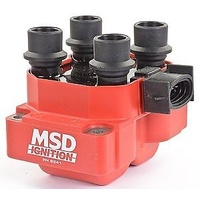
Speaking to the MSD tech team I was told to get the best from them I really need to tweak my dwell, but this actually makes them ideal for the aftermarket ECU crowd as you should find there's dwell setting feature in your software.
Sorry, not a great photo but here it is all the same.
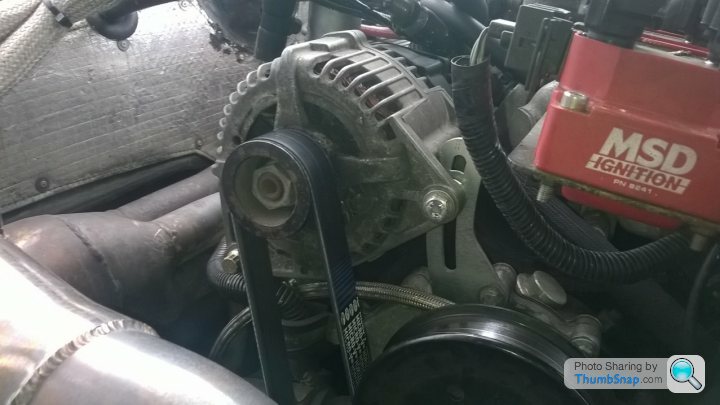
Perhaps it is all marketing BS but you're a brave company to pedal false claims if you're trading in the USA because they have the worlds strictest consumer protection and false advertising rules with serious penalties, and MSD have been around for years, they have an enviable reputation over the pond with serious horsepower drag racers and hot rodders, MSD are definitely not in the business of selling snake oil.
I swear by them, as Mac says they produce an insane spark, I've paired mine with MSD Super Conductor HT leads which have been bullet proof too. If you're running forced induction where cylinder pressures are high spark blow out becomes a real issue so you need a serious ignition system, likewise if you run LPG as I do it's much the same story.
Nearly six years on since I fitted these coils and I still have no complaints.

I've been running the MSD version of the ubiquitous Ford coil pack for almost 6 years now, the MSD part number is 8241 and are a common upgrade among owners of mid 90's 4.6L V8 Mustangs over the pond. While even my ECU installer poo pooed them as being no different from standard coils there's some evidence to suggest otherwise.
Here's the spec of the MSD 8241:

- Turns ratio: 83:1
- Primary resistance: .53 OHMs
- Secondary resistance: 13.7K OHMs
- Inductance: 3.9mH
- Maximum voltage: 40,000 Volts
Speaking to the MSD tech team I was told to get the best from them I really need to tweak my dwell, but this actually makes them ideal for the aftermarket ECU crowd as you should find there's dwell setting feature in your software.
Sorry, not a great photo but here it is all the same.

Perhaps it is all marketing BS but you're a brave company to pedal false claims if you're trading in the USA because they have the worlds strictest consumer protection and false advertising rules with serious penalties, and MSD have been around for years, they have an enviable reputation over the pond with serious horsepower drag racers and hot rodders, MSD are definitely not in the business of selling snake oil.
I swear by them, as Mac says they produce an insane spark, I've paired mine with MSD Super Conductor HT leads which have been bullet proof too. If you're running forced induction where cylinder pressures are high spark blow out becomes a real issue so you need a serious ignition system, likewise if you run LPG as I do it's much the same story.
Nearly six years on since I fitted these coils and I still have no complaints.
jojackson4 said:
I was going to go with the MSD coils
But I have struggled to get them into the country at a resnable cost
So ngk RR pack it is
You'll pay roughly £160 a pair including duty.But I have struggled to get them into the country at a resnable cost
So ngk RR pack it is
https://www.ebay.co.uk/itm/RED-MSD-IGNITION-EXTERN...
ChimpOnGas said:
The ones I found in the states were going to be £80 post and duty And the ones in Grease were not much better
All in I was close to £200
The ngk RR £130 all in
jojackson4 said:
ChimpOnGas said:
The ones I found in the states were going to be £80 post and duty And the ones in Grease were not much better
All in I was close to £200
The ngk RR £130 all in

I'm sure the Rangie ones will be fine though.
Gassing Station | Chimaera | Top of Page | What's New | My Stuff





